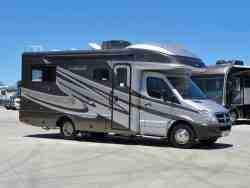Different Battery Types Are Used In Our Mobile Devices: How Do We
Take Care of Them?
Many different battery types can find their way into our Class C Motorhome. NiCad (Nickel Cadmium), NiMH (Nickel Metal Hydrate), and Li-Ion (Lithium Ion)batteries are the accumulators driving our handheld mobile devices, as an example. We all use these hand held devices, and they will ALL have different battery types in them.
So how do we take care of them? Hand-held mobile PDA devices are becoming as large a part of our life as the wristwatch used to be.
This technological world is charging forward at a blinding rate of speed, and many of us are acquiring the various battery types that come with any new electronic gadget. It is easy, therefore, to become confused with this alphabet soup battery onslaught.
We also have a potentially confusing selection of larger starting and house batteries that we use in our RVs? It is also important to preserve their charge capacity to their maximum levels.
My wife and I both use laptop computers. Most of the time, they would be plugged into 115V AC, and we were not relying on their batteries as a power source. We did use our batteries on occasion, and they were very useful when we needed them.
However, we never gave a thought about how, when, and why we should or shouldn't be charging or discharging these NiCad, NiMH, and Li-Ion batteries. Needless to say, it was a surprise when Lynn's battery up and died after only a year and a half.
That did not seem to be quite right. I felt that it should have lasted longer than it did.
At any rate, we bought a new one. We had not even paid any attention to the battery type that was used in her laptop, but we decided that, whatever it was, it should be a bigger battery.
We felt we could justify this purchase because, when Lynn did use her battery at a remote location, it was often used for well over a couple of hours. Too much power is less stressful than not enough power.
However, the sucker cost us over $150. Well, this got my attention! The battery became an investment. I don't particularly like throwing money away, so I figured I should learn how to take care of this new "investment", and get a better understanding of the battery types that we were using in our various electronic equipment.
Then I thought, well if I'm confused, others could be too! So I went investigating, and here I am writing about it on the Internet.
Therefore, I'm going to attempt to answer some of the maintenance questions about the various battery types, including the NiCad, NiMH, Li-Ion and other various commonly used batteries.

Nickel Cadmium (NiCad):
Typical Voltage - 1.2V
- Common devices that use the NiCad rechargeable batteries:
- two-way radios
- remote control toys
- cordless tools
- cordless phones
- cordless razors
- some laptops
- two-way radios
The following steps insure a long NiCad battery life:
- Ignore the light on the charger for the initial charge. You want your first charge to be for 12 - 16 hours.
- You want the next 6 - 7 charge/discharge cycles to completely drain the battery. This will "teach" your battery to accept a true full capacity.
- To maximize capacity, fully discharge this battery type every 4 - 6 weeks.
- If stored for 3 or more months, charge the battery for 12 -16 hours after removing from storage.
- Do not store battery on the charger.
- Avoid extreme temperatures, and store in a cool, dry place.
- Completely discharge the battery in its device prior to extended storage.
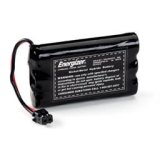
Nickel Metal Hydride (NiMH):
Typical Voltage - 1.2 V
These are a more environmentally acceptable alternative to NiCad batteries.
- Common devices:
- cellular phones
- cordless phones
- two way radios
- digital cameras
- camcorders
- cellular phones
- Ignore the light on the charger for the initial charge. You want your first time charge to be for 12 - 16 hours.
- You want the next 5 - 6 charge/discharge cycles to completely drain the battery. This will teach your battery to accept a true full capacity.
- To maximize capacity, fully discharge this battery type every 6 - 8 weeks.
- If stored for 3 or more months, charge the battery for 12 -16 hours after removing from storage.
- Do not store battery on the charger.
- Avoid extreme temperatures, and store in a cool, dry place.
- Completely discharge the battery in its device prior to extended storage.
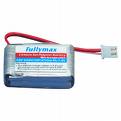
Lithium Ion (Li-Ion):
Typical Voltage - 4 V
These batteries have a higher energy output than NiCad and NiMH batteries and are often supplied as packs within appliances.
Lithium Ion batteries are also referred to as a CR123 battery. This battery is quickly becoming the battery of choice for many manufacturers of high-end electronic devices.
The standard CR123 battery is non-rechargeable, and is commonly referred to as a 123 battery, camera battery, or a photo battery. The CR123A rechargeable batteries are an example of brand name (Panasonic). The CR123A along with the RCR123, are identical in shape and size to the CR123, but offers rechargeable Lithium-Ion technology.
- Common devices:
- cellular phones
- PDAs
- MP3 players
- some laptops
- digital cameras
- camcorders
- portable DVD players
- cellular phones
- Ignore the light on the charger for the initial charge. You want your first time charge to be for 12 - 16 hours.
- You want the next 2 - 3 charge/discharge cycles to completely drain the battery. This will teach your battery to accept a true full capacity.
- Store the battery in semi-discharge state in a cool, dry place.
- Li-Ion batteries are not interchangeable with any other battery chemistry.
- Be sure the charger specifies that it is Li-Ion compatible.
- Do not store the battery on the charger.
- Physical shock and vibration can damage the battery's internal circuitry.
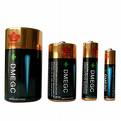
Zinc Carbon:
Typical Voltage - 1.5 V
These are the AAA, AA, C, and D batteries that are usually found in toys, flashlights, clocks, etc.
They have been around what seems like forever, but unfortunately, they cannot be recharged reliably.
Alkaline Manganese:
Typical Voltage - 1.5 - 9.0V.
These are a replacement for the zinc-carbon batteries and said to be longer-lasting than the zinc types.
They are usually found in radios, toys, cameras, etc.
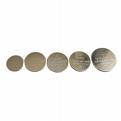
Mercury (button cell):
Typical Voltage - 1.35 V
- Common devices:
- hearing aids
- pocket calculators
- photographic equipment
- cameras
- hearing aids
Lithium (button cell):
Typical Voltage - 1.5 V to 3.6 V.
These are considered to be high energy batteries.
- Common devices:
- watches
- pocket calculators
- cameras
- watches
Zinc Air (button cell):
Typical Voltage - 1.4V
- Common devices:
- hearing aids
- pagers
- hearing aids
Silver Oxide (button cell):
Typical Voltage - 1.55V
- Common devices:
- calculators
- cameras
- watches
- calculators

Return To Top Of Page
Leave Different Battery Types Are Used In Our Mobile Devices: How Do We Take Care of Them? Page And Return To Mobile Communications: How To Stay In Touch With Friends and Family Page
Leave Different Battery Types Are Used In Our Mobile Devices: How Do We Take Care of Them?, And Return To Class C Motorhome: How To Achieve The Maximum RV Lifestyle!
Your Stories
Onan AC Generator Wouldn't Start
1995 Tioga Montara Had a Leak - Ouch!
A Simple Way To Put An Elecrtrical Thermostat On A Small Space Heater In A Truck Camper!
A Great Destinaton, With An Unexpected Outcome!
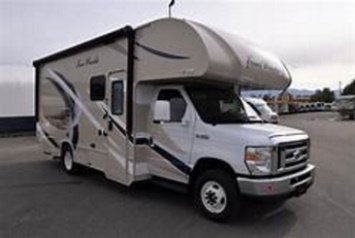
2018 Thor 21F Four Winds Class C Motorhome
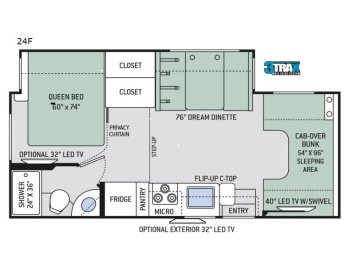
2018 Thor 21F Four Winds Class C Motorhome
2010 Fleetwood Pulse 24D
Class C Motorhome

2010 Fleetwood Pulse 24D
Class C Motorhome
Above Graphics Courtesy of:
http://www.DeMartini.com
| Gasoline Prices |






